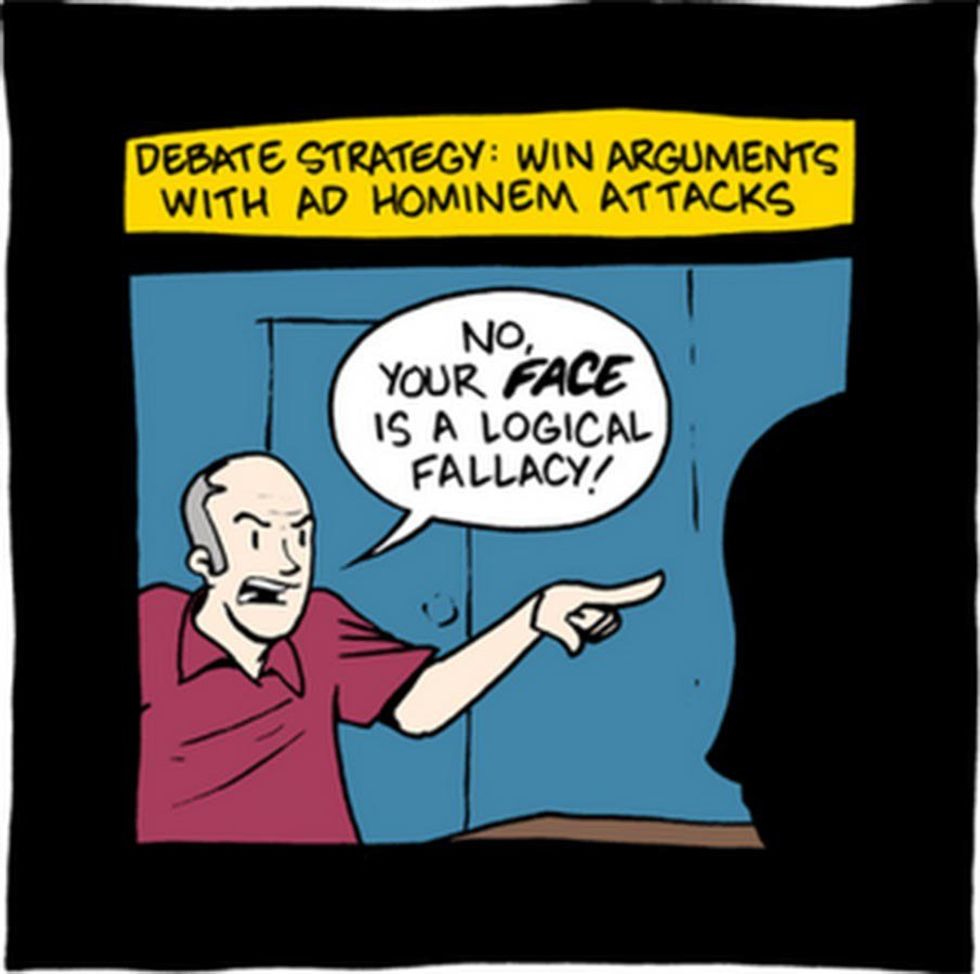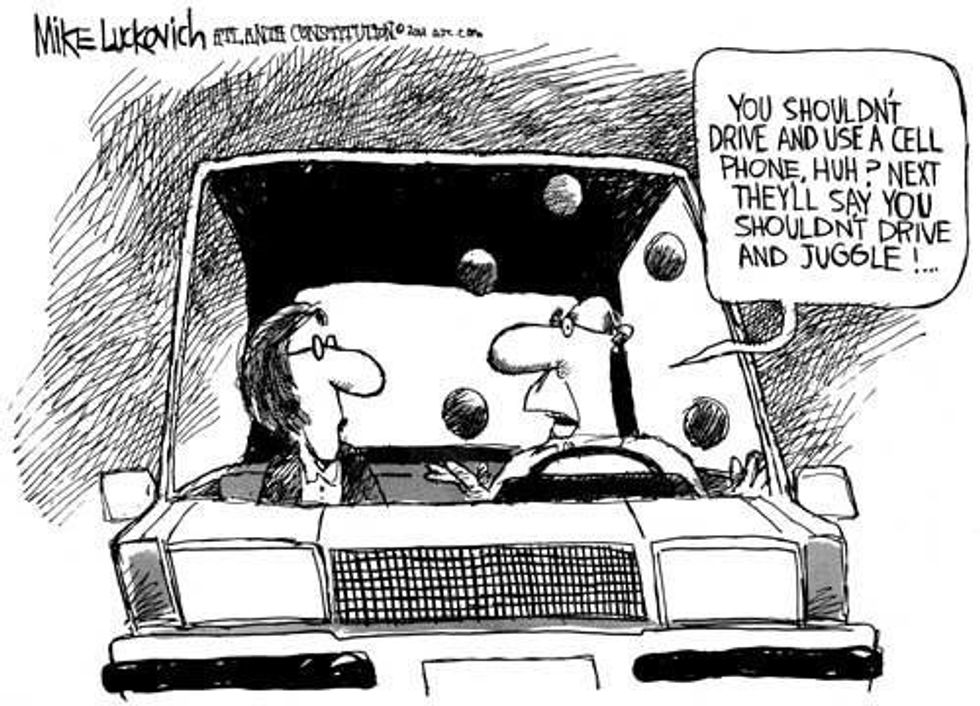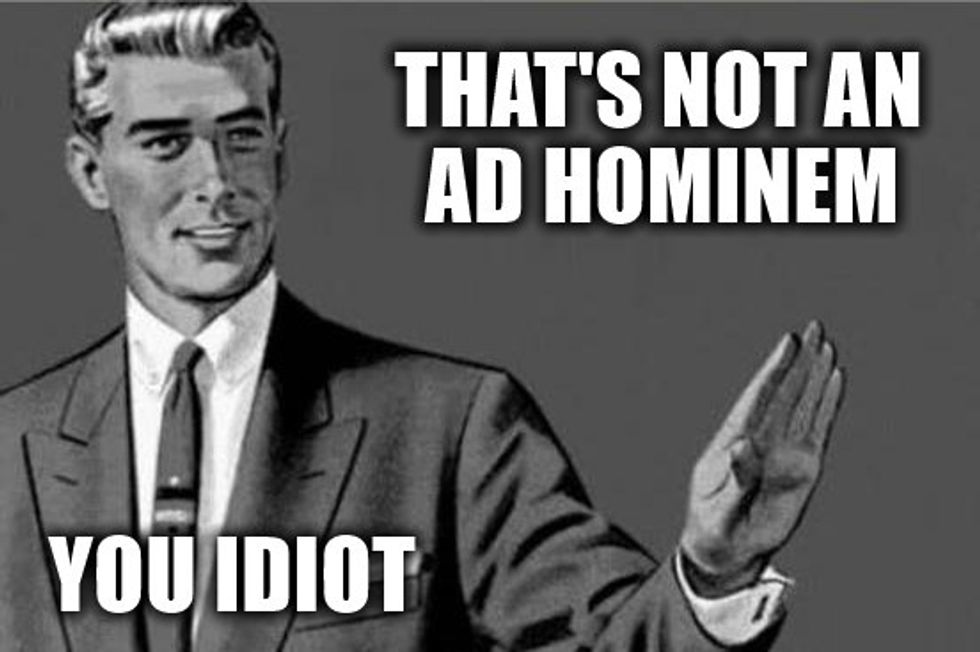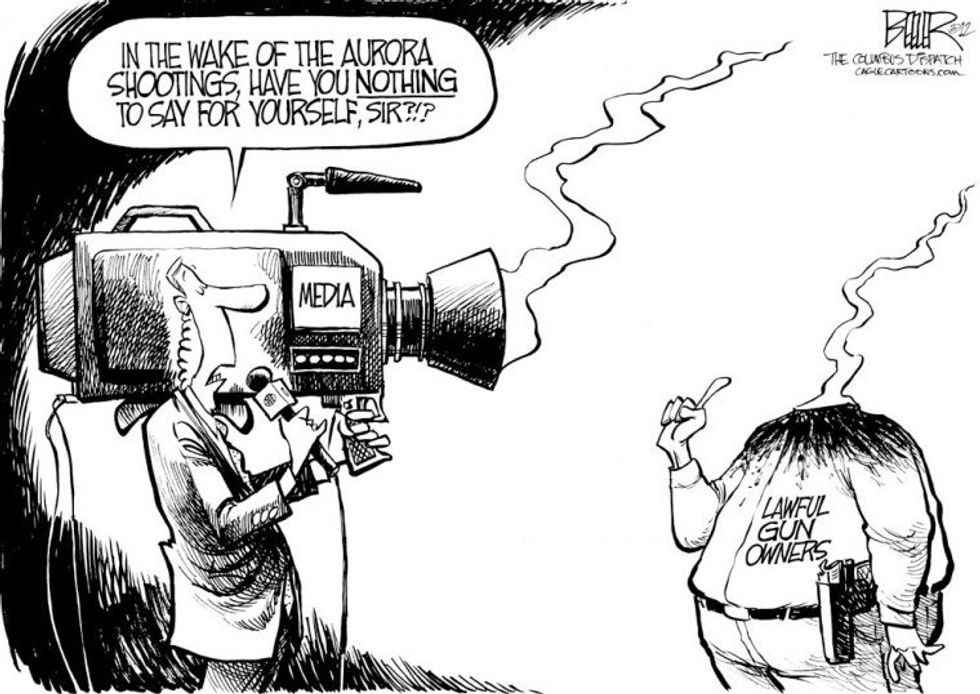Logical Fallacies to Avoid While Debating
1. Strawman Fallacy

A strawman is “a weak or imaginary opposition (as an argument or adversary) set up only to be easily confuted” as defined my Merriam-Webster.
This is a type of logical fallacy used in order to try and misrepresent a person, place, or thing to be much worse than it is in order to easily debunk it. The claims made about it are either baseless or exaggerated in order to purposely create a bad or unfavorable image.
An example would be “When John proposed we increase funding for education by lowering unnecessarily high funded sectors I was appalled! Who knew he hated the country so much he would be willing to cut military spending!”
2. Appeal To Emotions
This type of fallacy is defined by the Nizkor Project as “a logical fallacy characterized by the manipulation of the recipient's emotions in order to win an argument, especially in the absence of factual evidence.”
This is a commonly used method and while valid in some cases of persuasion should not be used to try and prove a political point. The way this works is instead of bringing up factual information or evidence to prove a point one uses an emotion invoking statement to try and play on the morals or ethics of another to win an argument.
An example would be “Ron really didn’t like eating chopped liver for dinner... but his mother told him to think of the poor hungry children in 3rd world countries who eat nothing for dinner.”
3. Slippery Slope
As defined by Merriam-Webster a slippery slope is “a course of action that seems to lead inevitably from one action or result to another with unintended consequences.”
This fallacy was hugely used during the debates of marriage equality. A slippery slope is used to try and derail a cause or standpoint by stating that some other bad or ridiculous thing will come to be because of it. This type of thinking is locked into an action A will always lead to action B and action B is a bad thing.
An example of this is “But if gays can marry then what’s next?! People marrying their dogs or cars?! Or maybe the acceptance of adult/child marriages?!”
4. Ad Hominem
Merriam-Webster defines this as “marked by or being an attack on an opponent's character rather than by an answer to the contentions made.”
We saw this used more times than we can count during the 2016 presidential race. This fallacy is used to try and attack the character of a person proving an argument rather than debating the argument itself. The point is to try and make someone look bad or untrustworthy so their arguments mean less by using past or present less-than-likable characteristics.
A great real world example of this is when Trumps character was attacked by using the 2005 Access Hollywood video to try and prove that he is against women and should not try and fight for them politically. I know this is a highly controversial topic but none-the-less it is an ad hominem and should not be used to try and undermine Trump’s political arguments or positions.
5. Loaded Questions
The definition of a loaded question is “the rhetorical trick of asking a question that cannot be answered without admitting a presupposition that may be false” as defined by Dictionary.com.
This is a much subtler logical fallacy in which the point is to try and trap a person into answering a question that has no good answer. Either way you answer the question it will be looked at in an ill light and usually the only way out of it is to make your own option C, ignore the question, or point it out for what it is… loaded.
A real world example of this is when co-host Savannah Guthrie of “Today” was interviewing then governor Mike Pence about his debate performance against Tim Kaine and stated that he spent a lot of time denying things Trump actually said. She showed a 26 second clip of a Clinton attack ad showing this and then asked him “was it the wrong approach to deny statements that you know are on video and on audio, are going to come right back to bite you the next day?” The full article can be found on MRC’s website if you’re interested in the “Option C” Pence had to use.

























